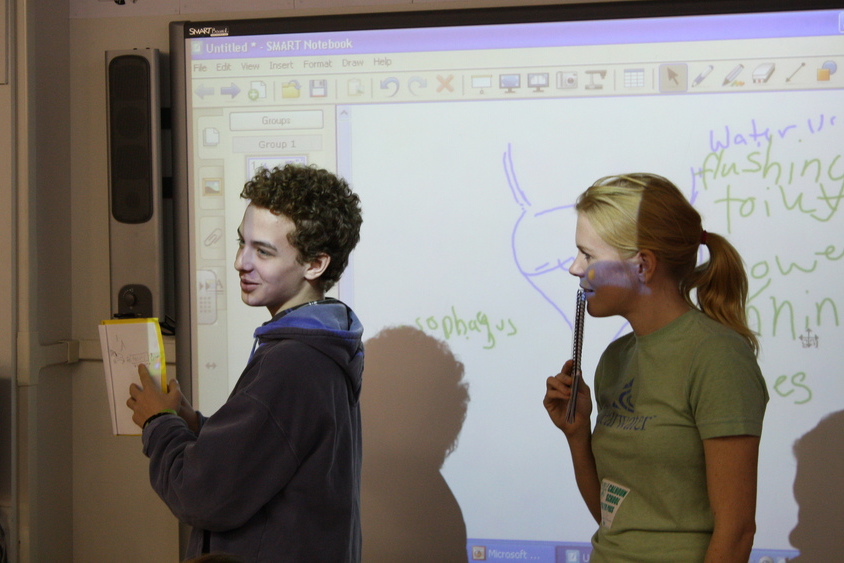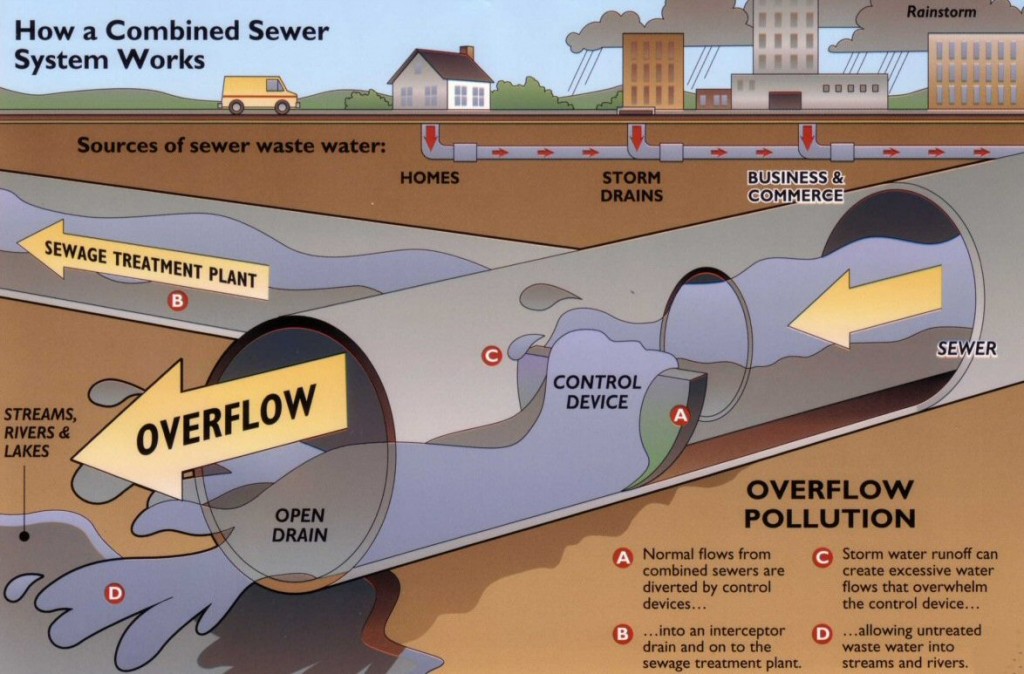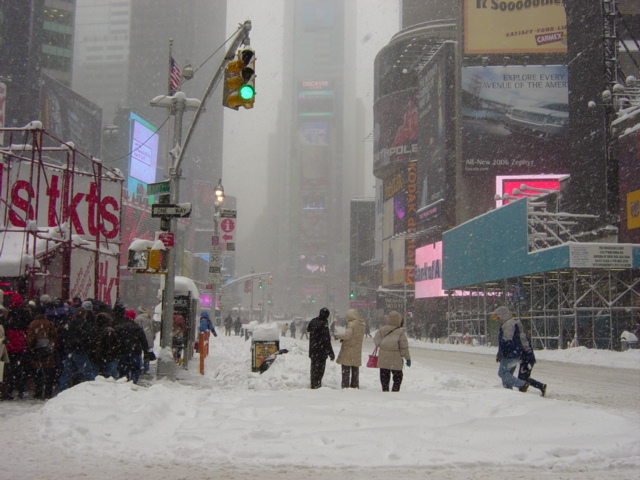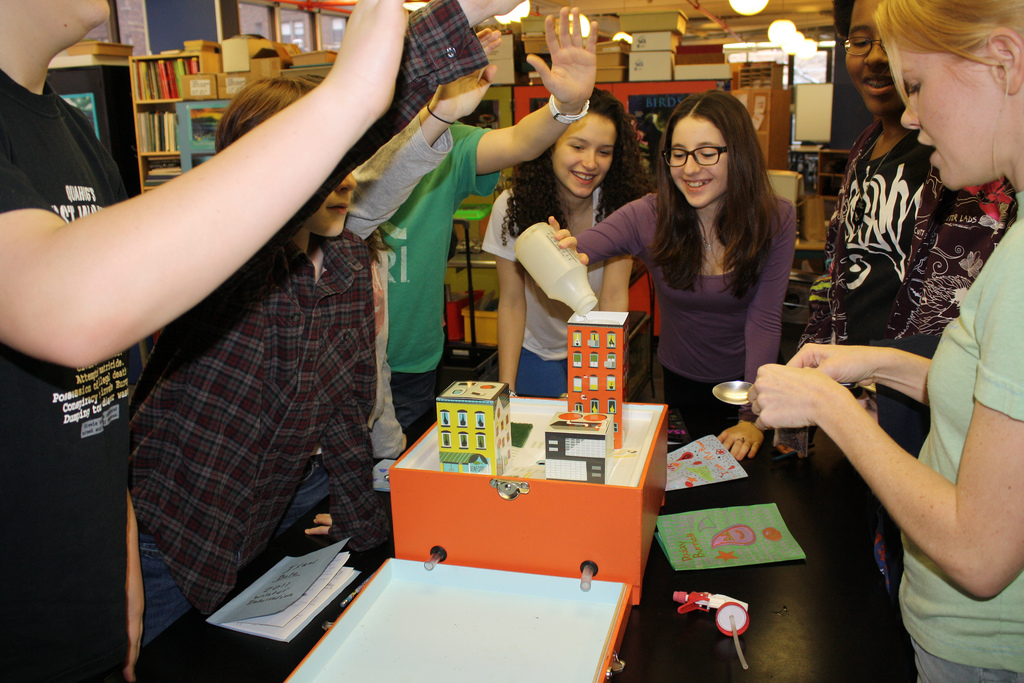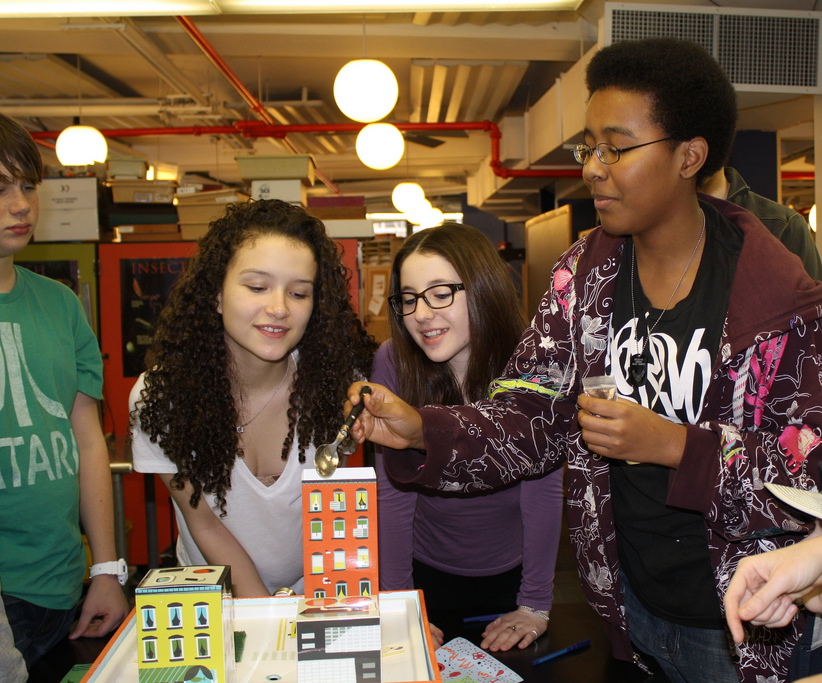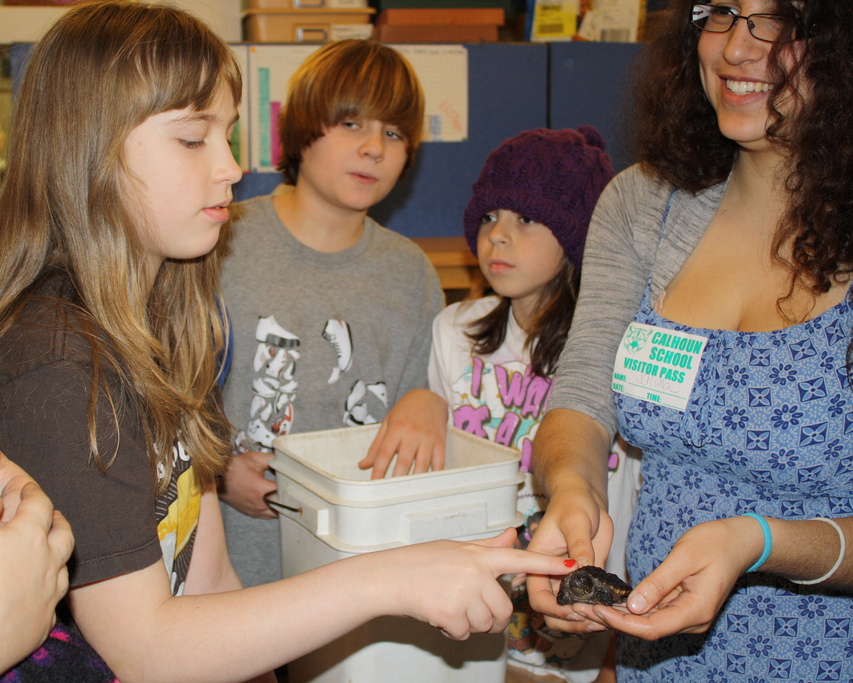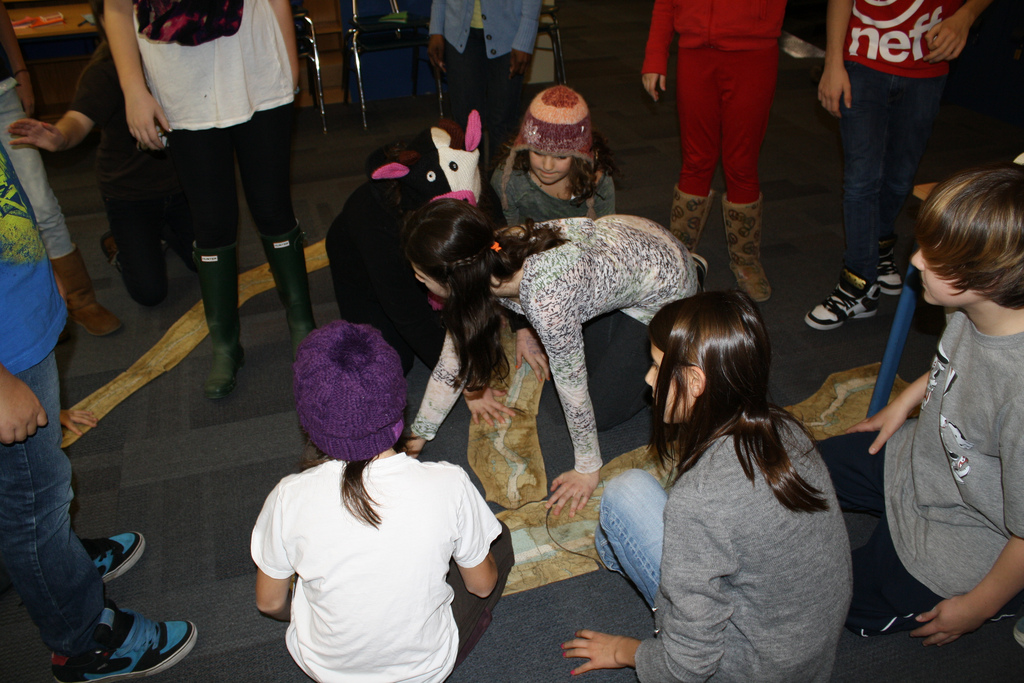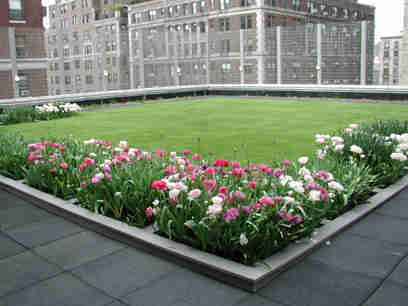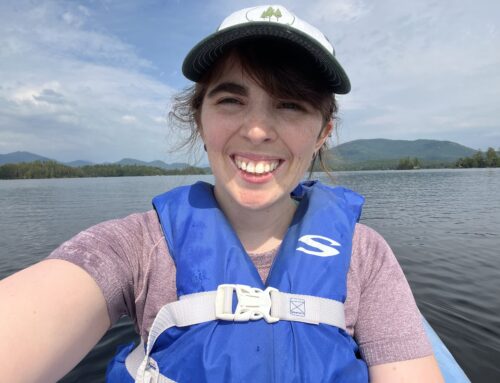By Nina Sander
“I know! What if we covered the entire city with a giant ShamWow?” Asks one eager student. “They’re super absorbent, so they could soak up all the stormwater before it gets to the storm drains.”
I’m at The Calhoun School on W. 81st Street in Manhattan and we are brainstorming creative solutions to a serious problem: stormwater runoff. During their 2-day interim session, Calhoun Middle School is exploring our planet’s most precious resource: water.
Yesterday, the middle school took field trips to the Harlem River Ecology Center and the Newtown Creek Wastewater Treatment Plant. Today, we are learning more about where our drinking water comes from, what happens to it after we use it, and how runoff from our city streets affects the Hudson River. As we soon discover, what happens to the river after a typical NYC storm isn’t pretty.
Whenever it rains in the city (or snows!) stormwater runs down our sidewalks and streets and into our storm drains, carrying with it all kinds of debris. Here, it combines with all of the used water from our homes.When it just rains a little bit, this water makes it way to a wastewater treatment plant, where the solids are sifted out, and the water is treated before being discharged into the nearest waterway. But when it rains a lot, torrents of stormwater inundate our sewer system and cause what’s called a CSO event (Combined Sewer Overflow).
Now this is where things get really messy. All of that trash-filled stormwater and our untreated sewage (that’s right…poop) never makes it to the wastewater treatment plant. Instead, it jumps the control device, and spills out of overflow pipes, directly into our local waterways. Ew.
And it’s not just rain water that cause CSO events. Look at all the lovely, white snow blanketing the city! It’s an urban winter wonderland! Tomorrow it will be “snirt” (That combination of snow and dirt, that is the bane of New York City pedestrians) and once all that snirt melts…well I think you know where I’m going with this–down the drain.
To really understand how our combined sewer system works, we have to get our hands dirty. Using a hands-on model called Sewer in a Suitcase, we recreate a typical rainy day in NYC. First we fill our apartment building with a tank of crystal clear Catskill water. Then we get to work using it all up.
We wash our imaginary dishes, brush our teeth, take showers, bathe our dogs, and use the toilet, again and again. Each time, we poured a little bit of pollution (in this case glitter) down our drains and onto the streets.
Dish soap goes down the drain, and moldy lasagna, even our dead pet goldfish (poor Nemo!) We toss MacDonald’s wrappers on the street, cigarette butts, dog poo, and motor oil. And then we make it rain and watch as the terrible glitter pollution flushes out of the CSO into our local waterway.
In addition to Sewer in a Suitcase, we get to spend some quality time with live animals from the Hudson River. Selima Barhi, a Clearwater education intern, introduces us to TimeKron the snapping turtle (He’s the turtle of the future!) and of course a hogchoker. This hogchoker was caught in our ship’s trawl net on the last sailing day of the season. Selima tells us about how these animals are adapted to their specific niche in the Hudson River ecosystem, and how pollution from CSO events can disrupt the delicate balance in which they live.
She also leads students in putting together a puzzle of the Hudson River. The 5th and 6th graders announce that they completed the puzzle in half the time that it took the 7th and 8th graders! (But who’s counting, right?)
At the end of a busy day we gather together again to brainstorm solutions to the pollution problem. The suggestions the Calhoun students offer are really thoughtful, and very creative. What if we outsource the wastewater treatment plants to New Jersey so we could make them really big, like Ikea? Or added some kind of strainer and trash compactor to the pipes to smush the sewage before it gets to the outflows? These, we learn, are “grey infrastructure” solutions—changes we could make to the underground sewer system. But what about “green infrastructure,” or above ground, solutions? If we can’t actually cover the city with a giant SamWow, is there something else we could use that acts kind of like a sponge…trees! Let’s put plants on tops of buildings and on our sidewalks. Plants and soils can absorb a lot of this runoff.
The Calhoun students are quick to point out that their school already has a green roof. In fact, it’s used as a learning center by many of their classes. The head chef also keeps an herb and vegetable garden, and this helps to feed the school. Cool! You can check out more photos of Calhoun’s green roof here.
Clearwater is proud to team up with such a environmentally-friendly school, and to work with such amazing young activists! We hope they keep thinking of ways to help protect the river and green NYC, and we can’t wait to see what service learning projects they come up with to help solve the problem of stormwater runoff. Maybe we will see these same students doing a trash clean-up out in Riverside Park, as Clearwater sails into the 79th street Boat Basin. Or maybe they will build some rain barrels for their garden to help conserve water and hydrate that beautiful green roof!
To have a Clearwater educator come to your school to lead a watershed awareness or runoff reduction project contact dave@clearwater.org, or nina@clearwater.org
To rent or purchase your own Sewer in a Suitcase and accompanying curriculum, contact Valeria@anothercupdevelopment.org at The Center for Urban Pedagogy.
For more info on The Calhoun School’s sustainability initiatives, or their Green Roof Learning Center, visit their “Special Initiatives” page @ www.calhoun.org

